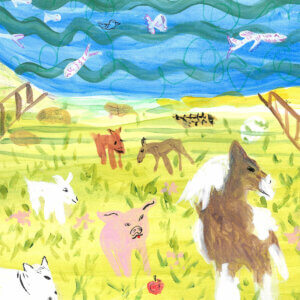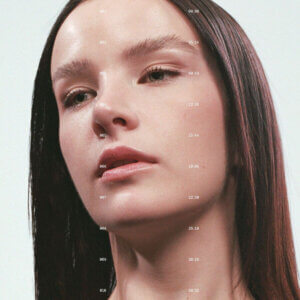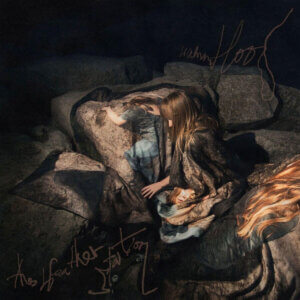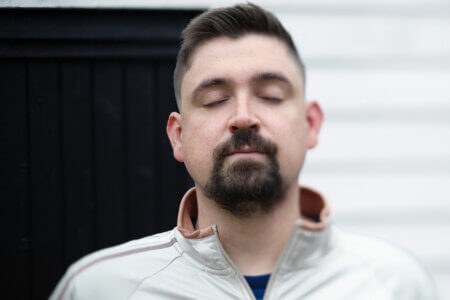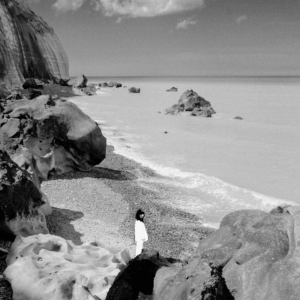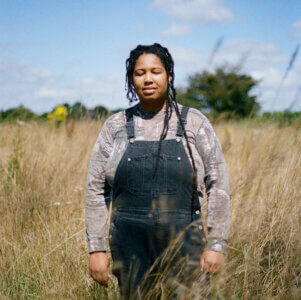Philip Selway Works from a Framework of Feeling
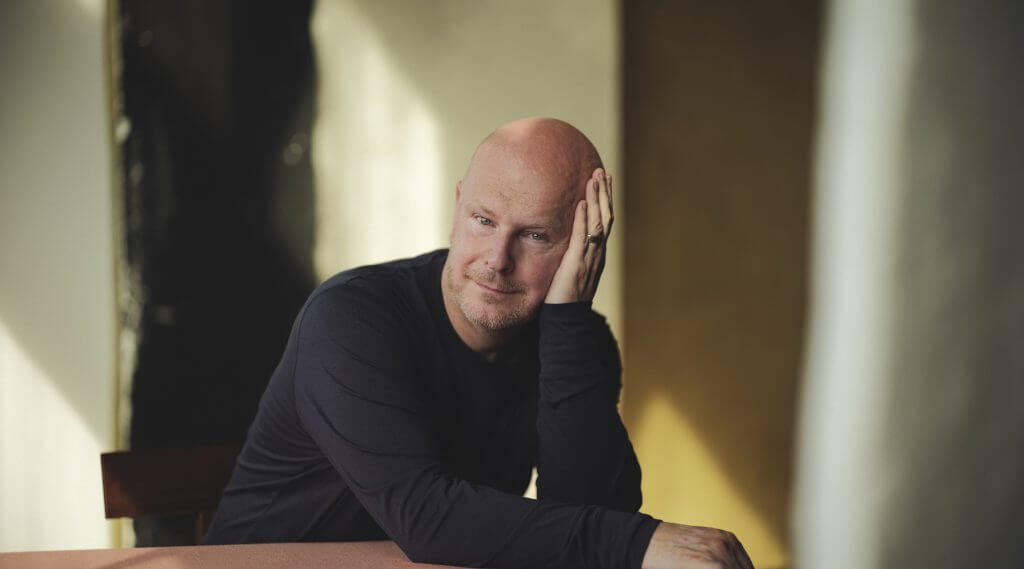
Time has been on Philip Selway’s mind. Like many people during the pandemic, the Radiohead drummer has been contemplating time’s relentless passage. But the preoccupation is also a natural result of aging, especially for someone in the middle stages of life straddling familial responsibilities with children and elderly parents.
The theme of moving through life permeates the 55-year-old musician’s third solo album, Strange Dance. On the gliding “What Keeps You Up at Night,” Selway encourages listeners to stay grounded with and find sanctuary in thoughts of their loved ones. “Go back / To the ones that you love / They’ll watch over you / You tell yourself / You need something to unwind / To help you make it through the night.”
“I wanted to take myself out of the main protagonist,” Selway says of Strange Dance’s abstract lyrics sprinkled with details too specific to be wholly impersonal. “I wanted to do something that really resonated emotionally with people as something that would be recognizable. It’s almost like providing a framework to hang their own narratives up. There’s something recognizable in the song, but then you flesh it out with your own narrative as a listener.”
Sentiments like those heard on “What Keeps You Up at Night” help listeners maintain a foothold in a sublimating album. “[Strange Dance is] broad, and it’s tall, a space where you can be and reflect, and you find yourself in the songs rather than me saying, ‘Let me tell you about my life’ and feeling very sad for myself,” Selway says with a laugh.
Emotional resonance speaks to one of Strange Dance’s sources of inspiration: Carole King, one half of an unlikely diptych that includes electro-acoustic pioneer Daphne Oram. “I wanted that human quality in Carole King songwriting—her songcraft hits home. They’re genius songs, but they’re very relatable. They feel conversational. There’s a warmth in them as well.”
As for Oram’s influence, Selway says, “That experimental aspect runs across all the musicians I’ve been working with.” Strange Dance features an extensive list of collaborators Selway has worked with in the past including Quinta, Portishead’s Adrian Utley, Laura Moody, Valentina Magaletti, and Hannah Peel.
“I knew the musical voices I wanted into bring into the record, and they’re very particular musicians,” Selway says, citing Laura Moody’s string and brass arrangements and Valentina Magaletti‘s drums and percussion work as examples. “In particular, Hannah Peel as well, whose soundtrack work has a big influence on me as I was coming up to make this record,” he adds before summarizing: “Finding that electro-acoustic aspect, knitting the two together—that’s what Daphne Oram represented. I just love the idea of these two seemingly opposite musical forces and where they would find their balance. What would be the meeting point in that?”
With full trust in his collaborators’ abilities and instincts, Selway allowed them to take his sturdy vocal-and-piano and vocal-and-guitar arrangements in any direction they felt compelled. “You take a song like ‘Strange Dance’—that surprised me at every turn,” Selway marvels. The song began as a piano ballad, but after brainstorming with Magaletti, it transformed into something reminiscent of Tom Waits’ Bone Machine with powerful percussion. “She did an amazing drum take, and the track had a completely new life.” The new arrangement gave space for the ensemble players to top it with “weird and wonderful orchestrations.”
Selway beams about the recording sessions for Strange Dance. “Everybody really bought into that open process, this collection of very developed musical voices—huge amounts of experience and talent in each one of them. You want a situation where they feel comfortable to come in and do what they do and feel free to try out stuff on the recordings. Hopefully that’s how they felt because that’s how it sounded.”
The sessions were punctuated by visits from studio mate Stewart Geddes. Selway and Geddes’ relationship unfurled over the pandemic. They convened every Friday afternoon to chat about family and football but also to see how each other’s practice was developing and the work each was producing. Soaking up Selway & co.’s sonic atmosphere, the abstract artist sketched, took photographs, and created impressionistic paintings. In doing so, Selway and Geddes formed a creative feedback loop: the former’s music and the latter’s art informed each other’s development in tandem.
“From that, it felt like a very natural step to ask Stewart if he would make the paintings for the [album] artwork,” Selway says. “Once it got to the stage when I was writing the lyrics, there was so much there tonally to respond to in what Stewart was doing. I felt that his paintings speak a very similar language to music. When you look at them, it’s how you imagine emotions could look like. That was a very central collaboration to the whole project developing. It’s so interesting when you see how someone reacts to something you’ve done, it helps you see it in a different light with a greater degree of understanding.”
Comfort can come as a detriment, but Selway manages to avoid its trappings, largely because he constantly develops new perspectives of his own work and that of his closest collaborators. “You look at Radiohead. That’s been going since we were all in school together,” he points out. But with every member of the band involved in multiple outside projects, “You see each other in different contexts, and you see each other with fresh eyes again, and you realize what is exceptional about each as musicians and the dynamic they bring to it,” Selway explains with excitement and admiration for his colleagues ringing in his voice. “That can stop you from falling into set patterns.”
Like much of Radiohead’s output, “There’s a definite arc,” Selway says of Strange Dance’s place among his previous solo albums, 2010’s Familial and 2014’s Weatherhouse. “When I first started making solo records, I thought, ‘I’ll aim to make three records and see where I can go in that time.’ For me, making Strange Dance was pulling all these elements I’ve been working on over the past decade together, all these musical relationships I’ve built up and the experiences I’ve had from working on soundtracks. Stylistically, if you go from the first album to Strange Dance, they’re quite different records. But I can see a particular line that runs all the way through it. Having said that I only wanted to make three records from the outset, I hope you know it’s very much not the case now. I want to make more,” Selway assures with a laugh.
“It’s good to have a framework to work within,” Selway says of his three-album goal. “It gives you somewhere to aim, and it keeps things moving forward. It doesn’t always work out the way you planned, but if you’ve got somewhere to aim for, even if you miss, where it lands, something interesting generally comes out of that.”
Selway reflects on his career as a musician. “Hopefully, my technique has improved over the years,” he jokes. “Feel has always been at the core of how I approach music. That’s the part that connects with other people. That’s the part in other people’s music that moves me. Technique is very important, and acquiring that ability to unlock your expressive ability, [but] it can’t dictate everything you do. Otherwise, it becomes stultified. It becomes stiff. It becomes a mechanical exercise. Feel for me is key to everything.”
Order Strange Dance by Philip Selway HERE
Latest Reviews
Tracks
Advertisement
Looking for something new to listen to?
Sign up to our all-new newsletter for top-notch reviews, news, videos and playlists.


